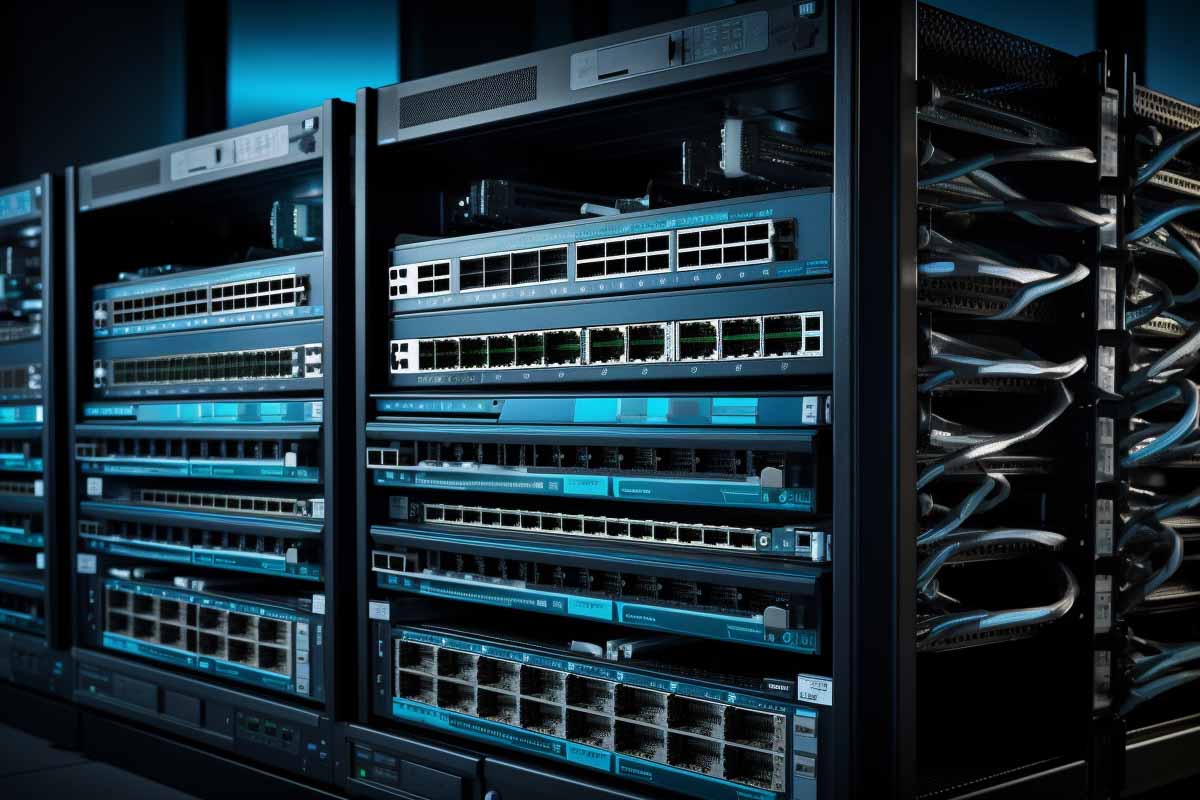Cisco’s Enhanced Interior Gateway Routing Protocol (EIGRP) is a proprietary routing protocol developed by Cisco Systems. EIGRP falls into the category of advanced distance-vector routing protocols, although it incorporates features that make it more like a hybrid protocol. EIGRP is designed to efficiently handle routing within an autonomous system (AS) and is commonly used in enterprise networks.
Propel Your Cisco Networking Skills forward
Become a pro in advanced routing and services with our Cisco 300-410 ENARSI course. Enroll now and get certified!
Key features of Cisco EIGRP include:
- Fast Convergence: EIGRP is known for its fast convergence capabilities. It uses Diffusing Update Algorithm (DUAL) to quickly converge the network topology when there are topology changes, such as link failures or network additions.
- Advanced Metrics: EIGRP uses a composite metric to determine the best path for routing. This metric takes into account bandwidth, delay, reliability, and load. This allows EIGRP to make intelligent routing decisions based on a variety of factors.
- VLSM and CIDR Support: EIGRP supports Variable Length Subnet Masking (VLSM) and Classless Inter-Domain Routing (CIDR), enabling efficient use of IP address space and allowing for more flexible network design.
- Route Summarization: EIGRP can perform route summarization, reducing the number of routes advertised and helping to optimize routing table size.
- Neighbor Relationships: EIGRP forms neighbor relationships with directly connected routers. These relationships enable efficient exchange of routing information.
- Dual Stacking: EIGRP supports both IPv4 and IPv6 routing, allowing for smooth transition to IPv6 networks.
- Loop-Free Routing: EIGRP ensures loop-free routing by using the Diffusing Update Algorithm. This algorithm guarantees that there will be no routing loops in the network.
- Unequal-Cost Load Balancing: EIGRP supports unequal-cost load balancing, allowing traffic to be distributed across multiple paths with different metrics.
- Route Authentication: EIGRP supports route authentication, adding an extra layer of security to routing updates.
EIGRP operates within a single autonomous system and is not designed to be used as an inter-domain routing protocol like BGP. It’s commonly used in enterprise networks due to its efficient convergence, scalability, and support for various IP features.
However, it’s important to note that EIGRP is a Cisco-proprietary protocol, which means it generally only works on Cisco routers and devices. If you’re working in a multi-vendor environment, you might need to consider using standard protocols like OSPF or BGP for interoperability.

Perpare for CompTIA Network+ Certification
Learn concrete vendor neutral Network fundamentals in our comprehensive CompTIA Network+ traning course.
Cisco EIGRP Configuration
Configuring Cisco’s Enhanced Interior Gateway Routing Protocol (EIGRP) involves a series of steps that need to be executed on the Cisco router. EIGRP is a Cisco-proprietary routing protocol used for routing within an autonomous system (AS). Here’s a basic outline of the steps required to configure EIGRP on a Cisco router:
Enable EIGRP and Define an Autonomous System (AS):
router eigrp <AS_number>
Replace <AS_number> with the autonomous system number you want to use. This number helps differentiate EIGRP instances from each other.
Define Networks to Advertise: Specify the networks you want EIGRP to advertise. This is done using the network command followed by the network address and wildcard mask.
network <network_address> <wildcard_mask>
Replace <network_address> with the network you want to advertise and <wildcard_mask> with the wildcard mask that corresponds to that network.
Optional: Adjust Metrics and Other Parameters: You can adjust various EIGRP parameters, such as bandwidth, delay, reliability, and load. These parameters affect the metric calculation.
metric weights 0 1 0 1 0 0
The above command sets bandwidth and delay as the only non-default metric components.
Optional: Filter Routes: You can use distribute-lists or access-lists to filter which routes are advertised or learned. For example, you might use distribute-list to filter routes based on specific criteria.
distribute-list <access-list-name> <strong>out</strong> <<strong>interface</strong>>
View EIGRP Status and Neighbors: To view EIGRP status and neighbor information, use the following commands:
<strong>show</strong> ip eigrp neighbors<strong>show</strong> ip eigrp topology
Save Configuration Changes: After configuring EIGRP, remember to save your configuration changes to ensure they persist after a router restart.
copy running-config startup-config
Keep in mind that this is just a basic outline of the configuration process. The specific commands you use might vary based on your network’s requirements and the Cisco IOS version you’re using. Always refer to the official Cisco documentation or relevant resources for the most accurate and up-to-date information. Additionally, the network topology, IP addressing scheme, and other factors will influence the exact configuration you need to implement.
Frequently Asked Questions About Cisco EIGRP
What is Cisco EIGRP and what distinguishes it from other routing protocols?
Cisco EIGRP, or Enhanced Interior Gateway Routing Protocol, is a proprietary routing protocol developed by Cisco Systems. It stands out from other protocols due to its hybrid nature, combining distance-vector and link-state characteristics. EIGRP uses a metric based on bandwidth, delay, reliability, and load to make routing decisions, ensuring efficient path selection while also providing fast convergence through the Diffusing Update Algorithm (DUAL).
How does EIGRP achieve its fast convergence in dynamic network environments?
EIGRP achieves fast convergence through the Diffusing Update Algorithm (DUAL). When a topology change occurs, routers share information about their neighbors and their routes. DUAL then calculates loop-free paths and updates routing tables accordingly. This distributed computation approach minimizes convergence time, making EIGRP suitable for networks where rapid response to changes is crucial.
What are the advantages of EIGRP’s composite metric in route selection?
EIGRP’s composite metric combines multiple factors like bandwidth, delay, reliability, and load. This provides a more comprehensive view of network conditions compared to other protocols that often rely solely on hop count. The composite metric enables EIGRP to choose the best path considering both bandwidth and delay, which can lead to more efficient utilization of available resources.
Can you explain the concept of EIGRP neighbor relationships?
EIGRP neighbor relationships are formed between directly connected routers in the same autonomous system (AS). Routers exchange hello packets to establish and maintain these relationships. Once established, neighbors exchange routing updates, helping each router build a complete picture of the network. This neighbor-based approach enhances scalability and efficient exchange of routing information.
In what scenarios might network administrators opt for EIGRP over other routing protocols like OSPF or BGP?
Network administrators often choose EIGRP for enterprise networks where Cisco devices dominate the infrastructure. EIGRP’s efficient convergence, scalability, and support for advanced features like unequal-cost load balancing make it suitable for these environments. However, in multi-vendor networks or in cases where inter-domain routing is needed, protocols like OSPF (Open Shortest Path First) or BGP (Border Gateway Protocol) might be preferred for their standardized nature and broader compatibility.


























1 thought on “Cisco EIGRP Configuration: A Quick How To”
Great article, very informative!